Victoria Lomasko, Two Worlds, 2021, Ink, watercolor and acrylic on paper 420 x 297 mm | Courtesy Edel Assanti, London
She arrived in Italy last March after a daring departure from her Russia – a country in which she tried to stay until the very end to carry out her role as a witness – until now Victoria has had to fight to obtain documents “spending a lot of time – as she herself says – to prove she is a dissident artist ”. And now that her latest work was completed last night right inside the Museum of Santa Giulia – space that until January 8 will host his personal exhibition entitled The Last Soviet Artist curated by Elettra Stamboulis – the one who is considered by critics as the most important Russian graphic social artist can truly be said to be happy.
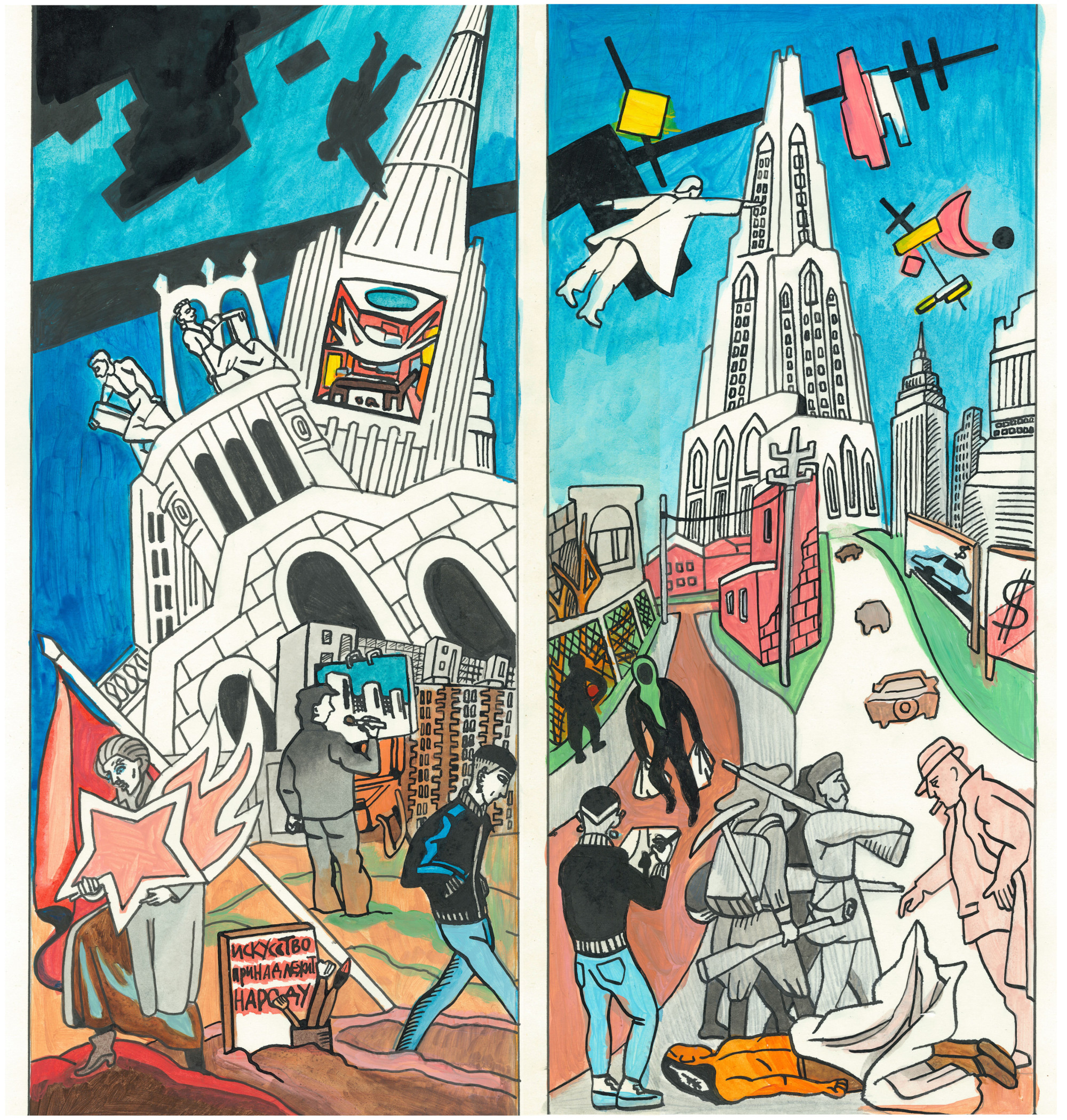
Russian Artists in The USA (Dartmouth College Sketches), 2019 Watercolor, acrylic, pen and ink on paper 415 x 300 mm, each Courtesy Edel Assanti, London
“In Brescia they recreated the atelier of my dreams” confesses Lomasko during the press conference for the inauguration of the exhibition itinerary wanted by the Municipality of Brescia and the Brescia Museums Foundation. “I like to think of Italy as a beauty spreadable sandwich, but so big you can’t bite it. I am struck by the way people relate to art ”.
Presented as part of the Brescia Peace Festival, the exhibition, which can be visited free of charge for the entire duration of the initiative, marks the third act of the research curated by Elettra Stamboulis, undertaken by the Brescia Museums Foundation in 2019, which began with the Zehra exhibition. Doğan We will also have better days. Works from Turkish prisonsand continued in 2021 with the staff of Badiucao China is not close. Works by a dissident artist.
“This third episode of the Brescia Musei Foundation project – underlines Francesca Bazoli, president of the Brescia Musei Foundation – shows how contemporary art is an effective tool for addressing the issue of the protection of universal human rights. We weren’t looking for dissidents, but for artists who could express this kind of message. Fifty years ago Brescia hosted the first Russian dissidents Mal’cev and Sinjavskij and still today welcomes and supports those who speak out for the rights of all of us ”.
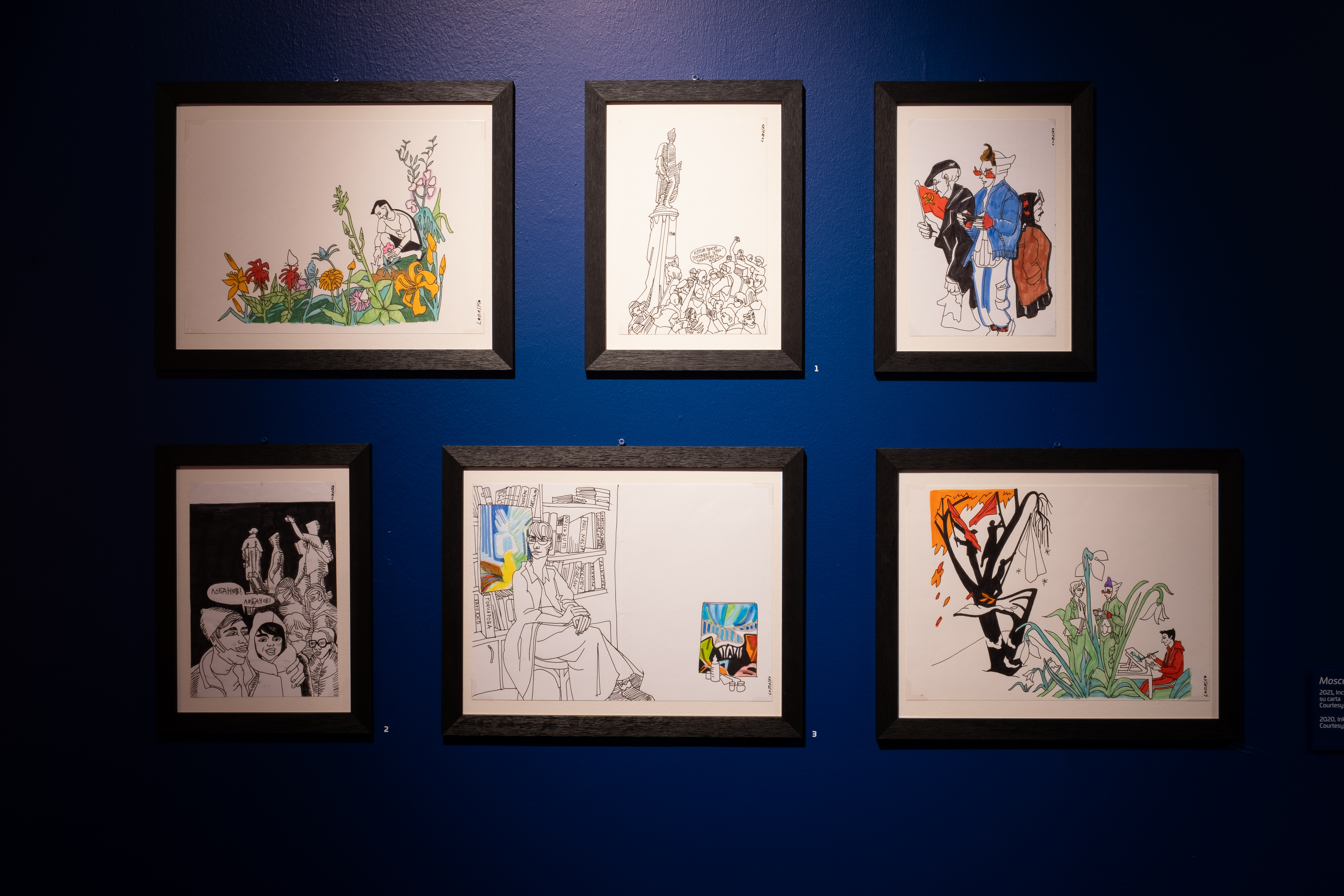
Victoria Lomasko | The Last Soviet Artist, Installation | Photo: © Alberto Mancini | Courtesy Brescia Museums Foundation
The exhibition itinerary, designed specifically for the spaces in Brescia, features a vast production of the Russian artist who uses drawing as a means of reporting and resistance. Lomasko created site-specific works during his residency in the city: five monumental panels designed and created ad hoc in the ateliers of the Santa Giulia museum complex, in the two months that saw the artist staying in residence at the Brescia Museums Foundation. And today the surprise announcement: “the five works will remain inside the museum, because they were created for you” promises Victoria, with the hope that, in the case of temporary exhibitions held in international museums, they can be generously lent by Brescia and then return to the city.
Lomasko’s artistic research is illuminating in helping us to meticulously reconstruct the social and political history of Russia from 2011 to today, from the anti-Putin demonstrations, which the artist has drawn live, to the representations of “deep Russia”, that of the forgotten and the emerged, who have always been his favorite subjects.
On the other hand, as Stefano Karadjov, director of the Brescia Museums Foundation points out, “The choice of the Foundation to show the work that has been mapping the last, the rebels, the marginalized in that immense and complex country that is Russia since 2005, dates back to a before the start of the conflict with Ukraine. Our idea dates back to about two years ago, when a certain one was raging cancel culture in Russian sauce. In those months we had the idea of the exhibition and we immediately received the shield of the city politics that has always protected this project. Last February’s attack made Lomasko’s visual storytelling even more urgent. It is very important to underline how the research of the artists who were the protagonists of this trilogy dedicated to the relationship between contemporary art and rights is not guided by priorities of a geopolitical nature, but aimed at the discovery of new artists, active interpreters of the society of their time “.
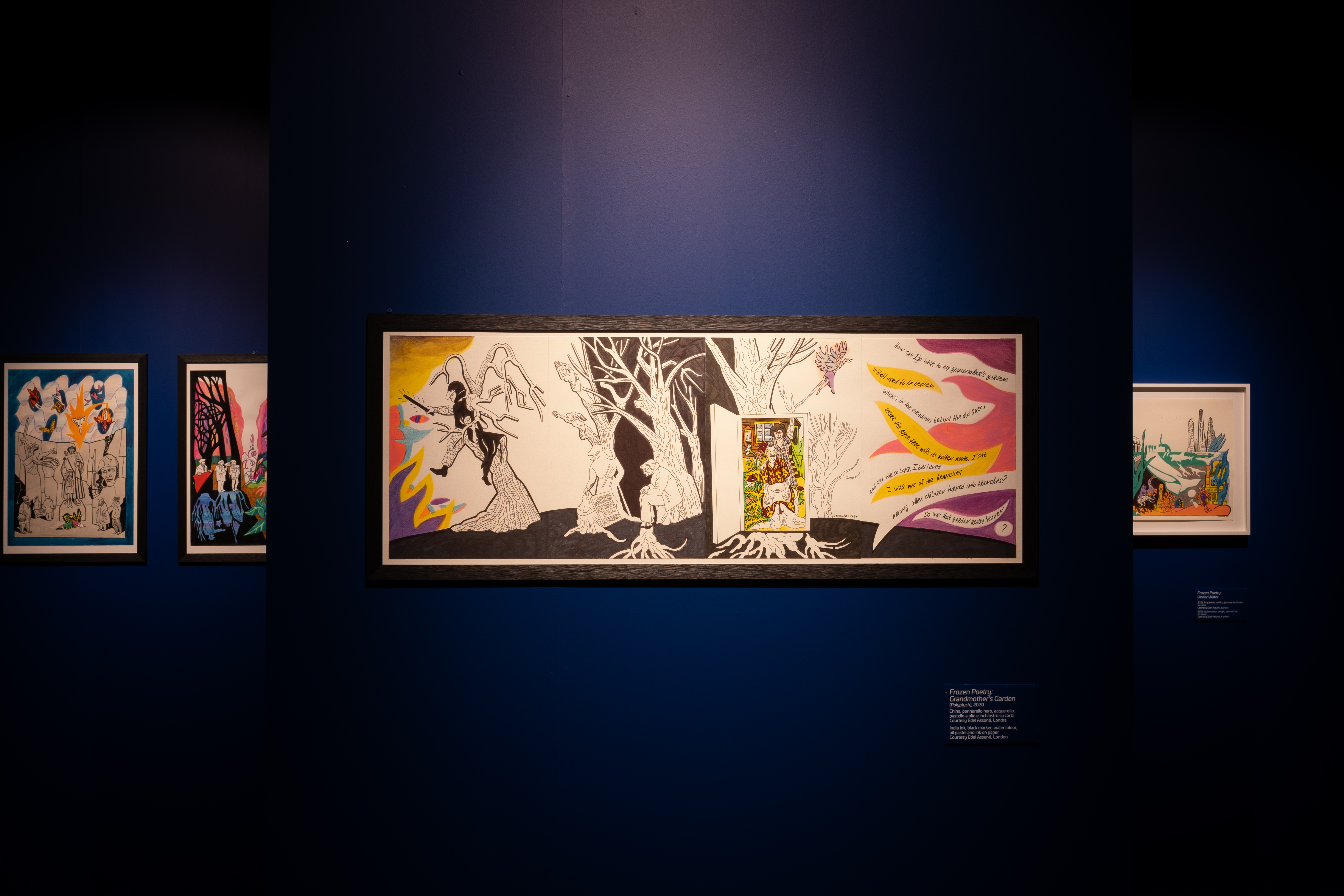
Victoria Lomasko | The Last Soviet Artist, Installation | Photo: © Alberto Mancini | Courtesy Brescia Museums Foundation
Thus, as the curator reiterates, The Last Soviet Artist becomes a historical-geographical-social journey with an installation designed to make the visitor travel in a geographical space unknown to him, beyond any simplification, following the atlas of anonymous faces, that of the last who live in the immense suburbs of empire, from Dagestan to Ingushetia, with its population of half a million, and 78 ethnic groups.
The artist’s invitation is to enter the geographies of the faces and thoughts of all those worlds that for many people are only names on the globe: Bishkek, Yerevan, Tblisi, Osh, Minsk.
In Frozen Poetrythe first section of the exhibition in Brescia, Frozen poetry allows you to retrace and visualize the artistic, social and intellectual transformations of the town of Lomasko. We find works that pass through the mediation and resilience of artists such as Lomasko’s father who had to draw for the Soviet regime despite being distant from it, to the point of arriving at the new generation that draws and witnesses the events imagining what will come.
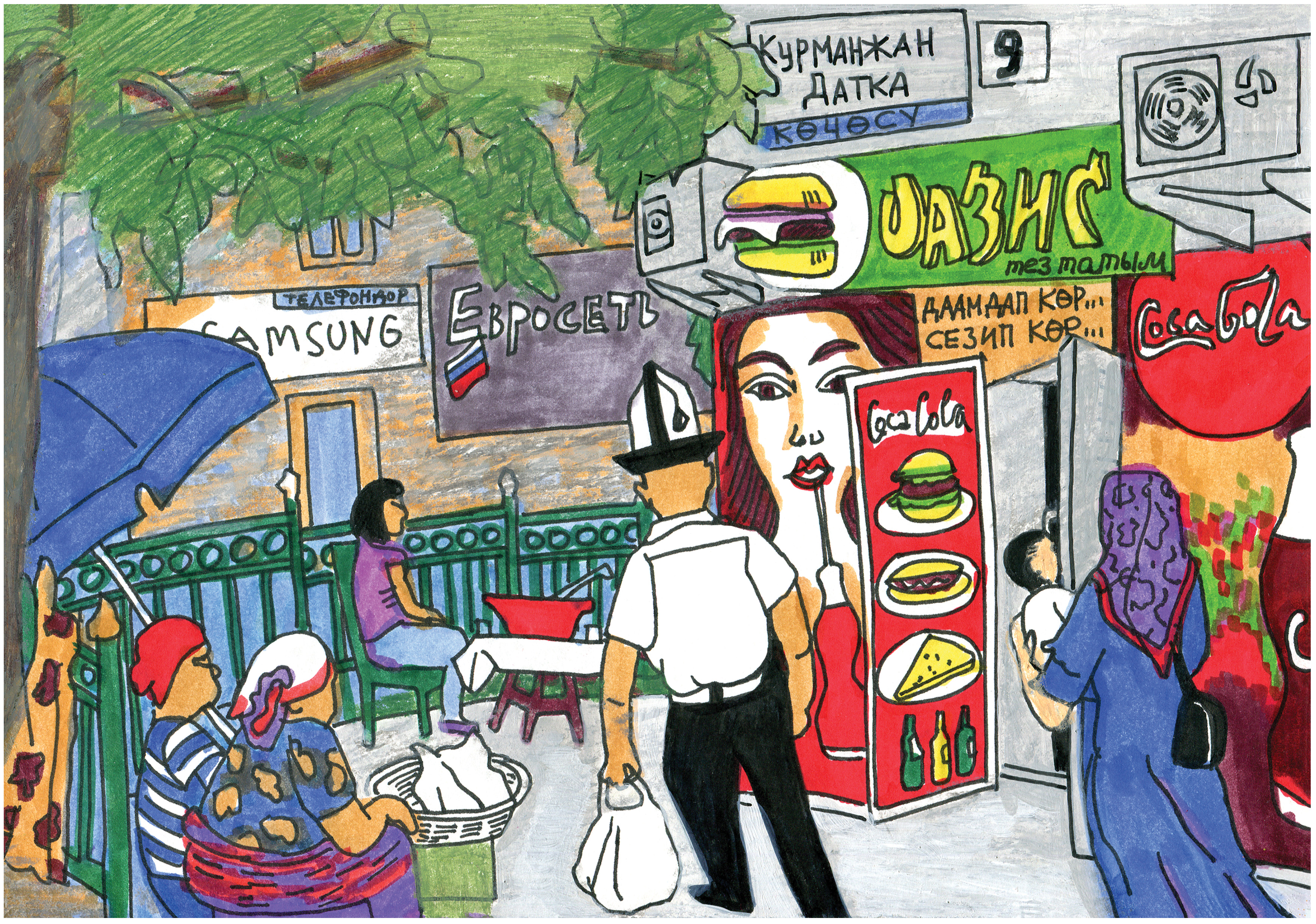
Victoria Lomasko, A Trip to Osh # 3, 2016 Ink, marker and oil pastel on paper 297 x 210 mm | Courtesy Edel Assanti
If to palpitate in the second section, Drawing Diaryis the generational theme with the artist who recalls how dissidence can also be constituted by words spoken in a low voice, an alienating effect typical of the theater explodes in the third section entitled Changing of Seasons. Here a wall gives way to the huge mural created in Brussels immediately after the artist’s forced exile. In this harrowing work that highlights the artist’s ability to create possible worlds, monuments become subjects that work mercilessly, continuing, albeit headless, to throw the sword. People take on dramatic and desperate tones, while voices of dissidence create shadows that make them misshapen. The only act allowed is the gesture of placing the sheet on the body of Bucha’s victims.
The most narrative figure of the entire itinerary is instead set in the fourth chapter of the exhibition, entitled Graphic Reportages, which tells how Russia got to this point. Here the public will have the opportunity to browse the works of the series Juvenile Prison, which testify to the juvenile prison reality of the capital and the chronicle of the Resistance fallen into oblivion. The series also reviews the complex reality of women: street workers and local workers, workers for others and the disillusioned who keep the country on its feet by catalyzing the artist’s feminist gaze.
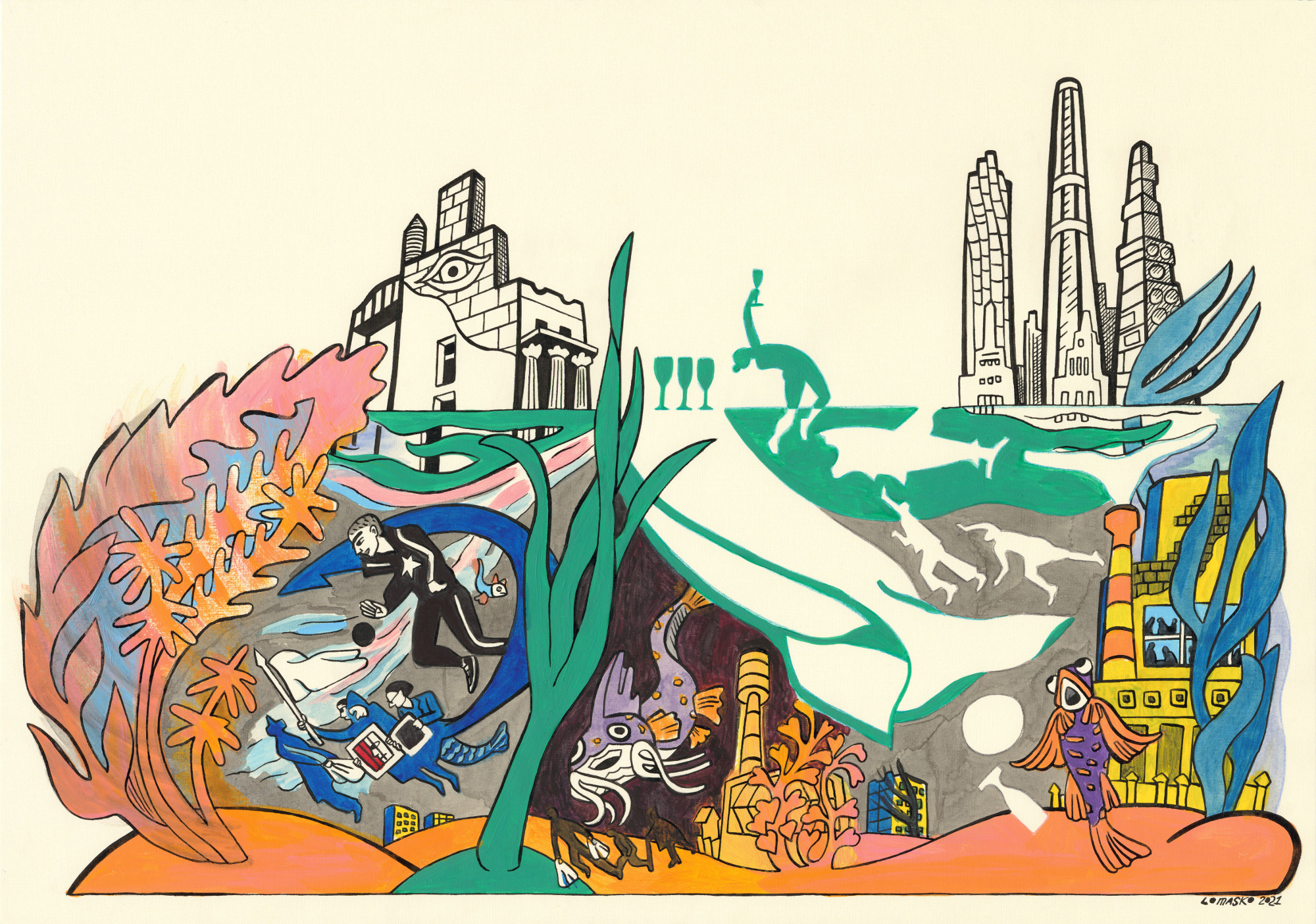
Victoria Lomasko, Under Water, 2021, Watercolor, acrylic, pen and ink on paper 590 x 415 mm | Courtesy Edel Assanti, London
From the solitude of Moscow – an island suspended in the void as early as 2021, in the long year in which the borders remain closed and the fibrillation in the square resumes during which Lomasko draws the participants live, without filters – the exhibition leads to the last section . Five Steps it is a prayer on the meaning of exile, on loneliness, on isolation, but also on the profound trust in the idea of humanity which unites all and which is able to cross borders. These are five stations created specifically for Brescia that have seen the artist busy for over a month.
“These five works are accompanied by texts – anticipates Stamboulis -. The text is an integral part of Victoria Lomasko’s art. The work can only be seen if you read the accompanying text “.
At the end of the route, absolutely not to be missed The Last Soviet Artista documentary film dedicated to Victoria Lomasko, made by the English director and musician Geraint Rhys, subtitled for the occasion.
![]() Read also:
Read also:
• The city of the Lion: the Middle Ages in Brescia in a great exhibition
• The word to Badiucao: my art beyond censorship

